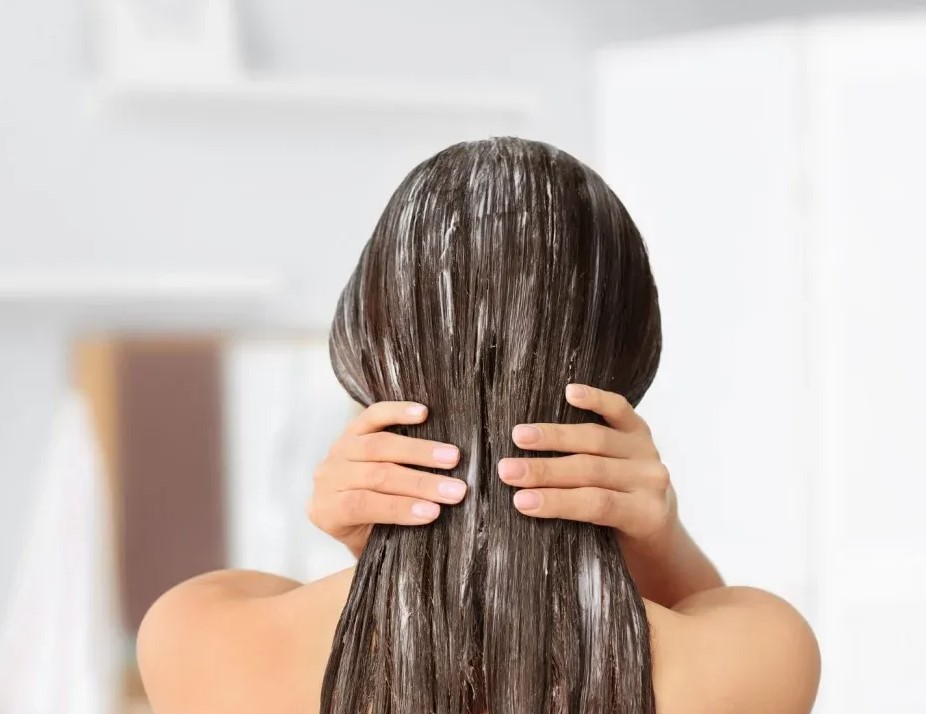Whether it’s your first time trying a hair mask, or you’ve been doing them consistently for years, there are certain principles that apply. The premise remains the same: applying heat to the scalp will help remove impurities and excess oils from your hair. Scalp masks work by leaving your healthy hair exposed to a high temperature for an extended period of time. The result? Healthy, clean, healthy — and better-looking hair. To learn how often to do a hair mask for better hair and scalp health, we need to look no further than our own two hands.
Doesn’t everyone know that eating cheese five times a day will give you neon-coloured wavy strands? Not so fast! Scientists at the University of Illinois recently conducted a study that challenged this antiquated notion and revealed that people who ate processed foods with added sugars were more likely to have limp, bleached-out locks than their less sweet counterparts. In other words: keeping track of how much dairy, sugar, salt and processed food you eat plays a big role in how your hair turns out.
Even though this article won’t give you an exhaustive list of when to do a hair mask, it will give you some helpful guidelines for trying to eliminate those ITCHING HEADS that come from not doing one! So let’s get started with these tips on how often to do a hair mask for better scalp health.
What is a Hair Mask?
A hair mask is a special treatment that aims to condition, straighten, and nourish your hair, scalp, and body simultaneously. Typically, a hair mask is made by combining natural ingredients with herbal extracts, minerals, amino acids, or beneficial plants such as chamomile, rose, or sage. When done correctly, a hair mask has the potential to improve not just your hair, but also your scalp and skin. The ingredients are added to the hair strand at a high enough temperature to draw out impurities, leaving your hair clean, shiny, and soft. This is great for your hair, as it gets rid of build-up of dead skin cells, excess oil, and other impurities that cause scalp and hair problems. On the other hand, a hair mask left on the scalp for too long can dry out and damage your hair. If this happens, you’ll likely notice that your hair looks dull and lifeless, and even your scalp will feel tight and uncomfortable.
Why Does Hair Masking Have Such An Effect?
As we’ve discussed, the premise of a hair mask is that you apply a high heat to the scalp, scalp skin, and scalp skin to extract the impurities and excess oils from your hair. In doing so, the ingredients in the mask can benefit your entire body, as well as your hair. There are many different types of hair masks, each with unique benefits. Some are better for dry or damaged hair, while others are better for oily or dry scalps. While all hair masks can benefit your scalp and hair, it’s important to look out for those that target specific issues. For example, a scalp mask could be used two weeks after a haircut or straightening session to remove build-up from a color or bleached scalp. Strawberry or grapefruit masks are good for oily or dry scalps. On the other hand, banana or papaya masks could be used to help regulate body temperature, which is helpful for both your hair and skin.
How to Do a Hair Mask for Better Hair and Scalp Health
Your hair needs a regular maintenance, whether it’s washing and conditioning your hair or using a hair mask to keep it looking lush. Hair masks are simply a healthy way to keep your scalp, which usually has muddy and oily livers, in line with the rest of your hair. Moreover, you can use them regularly for better hair and scalp health.
Start off by getting your hair washing routine right. Wash your hair daily, using a shampoo that contains a large percentage of powerful, natural ingredients. Follow this up with a conditioner that has the same ingredients as the shampoo, but a deeper concentration. Also, make sure to use a good moisturizer when conditioning your scalp. This not only keeps your scalp hydrated and healthy, but it prevents your hair from looking fried or brassy. Once a week, gently massage your scalp with a scalp massage oil such as avocado, sesame, or coconut oil. This helps to unclog your pores and is great for your scalp. Apply a hair mask once a month, as part of your hair wash routine. For example, you could massage our scalp with a banana mask once a month, followed by conditioning treatment with a rosemary or chamomile hair mask.

Can You Do a Hair Mask Any Time You Want?
This is a question we hear all the time, and the answer is: it depends. Some people only need to do a hair mask once every few weeks, while others will bathe their hair more than once a month. You might even be one of those people who only does a shampoo and conditioner mask once every few months or years. It all depends on what your stress levels are like, what kind of scalp issues you’ve been having, and how important regular scalp checks are to you.
Is it morning or evening, for example? Similarly, does it matter if you do a hair mask on a weekend or weeknight? The answer to both questions is “yes” — it does matter. It’s better to do it once a week, but you can also try doing them more often, as long as it’s less frequently. It’s better to do a weekly hair mask once a month, but you can also try doing them every two or three days if you like. Unfortunately, there isn’t a clear-cut answer as to when you should do a hair mask. The idea is to do a hair mask when your hair is particularly dry, damaged, or oily. Ideally, you’d do a hair mask just before a shower or a bath, but you can also try doing it a little before or after washing and conditioning your hair.
How to Take Care of Your Hair After a Hair Mask
After you’ve applied a hair mask, your main focus should be on protecting your hair and scalp. Always make sure to wash your hair as soon as you finish using the mask. Once a week, use a deep conditioner to give your hair extra TLC. If you’re using a mask every other day or shorter, follow up with a deep conditioner the next day as well. If you’re using a weekly deep conditioner, allow it to sit on your hair for at least 20 minutes before shampooing to maximize its effects.
Conclusion
The research is still limited on the exact times and dosages of hair masks, but there is enough data to suggest that any time your scalp is stressed, dehydrated, or oily, it will show up in your hair. Using a hair mask once a week can help unclog your pores and leave your hair looking healthy and balanced.





3 Comments
Cindy Jefferson
I really enjoy your blog! Keep up the great work!
Martha Stewart
Finding this blog made my day.
Jessica Brown
Just what I needed, thank you!